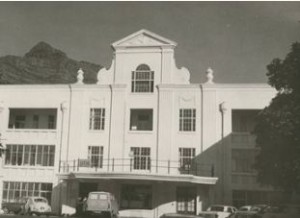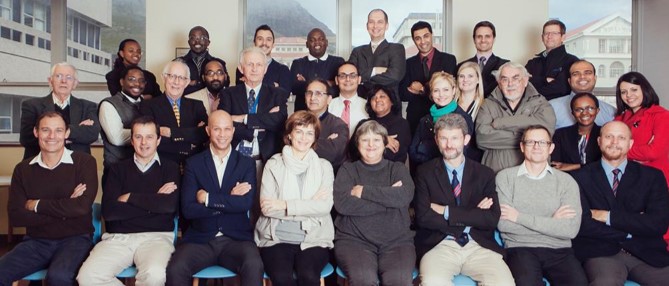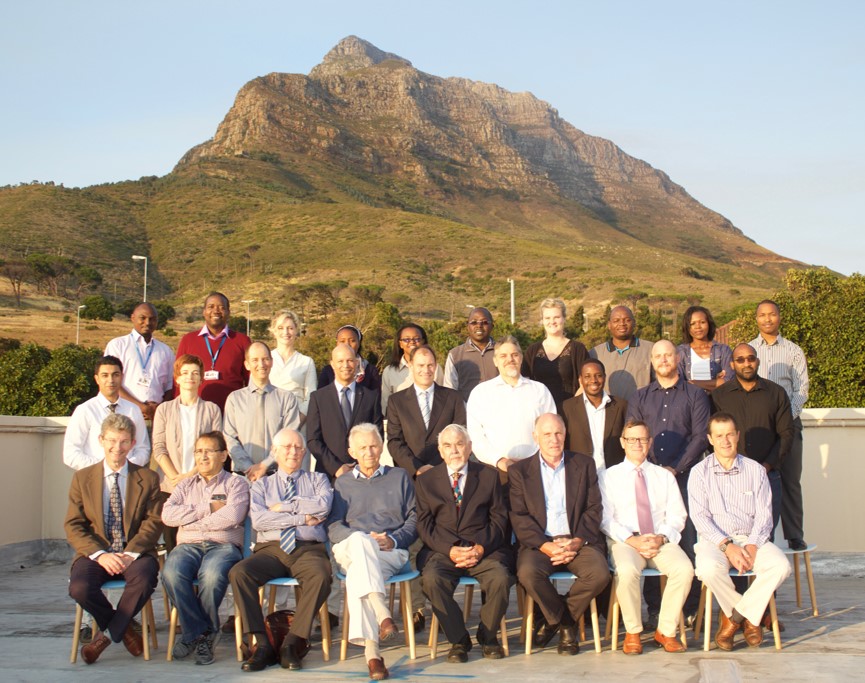
Our history

Neurosurgery emerged as an independent discipline in Cape Town with the return of Dr Herman de Villiers Hamman in 1946, following his training in Munich and Edinburgh. He initially faced opposition to the establishment of a neurosurgical unit at Groote Schuur Hospital, but was eventually appointed to the staff, initially as a registrar in March 1948 and then as honorary neurosurgeon in 1949.
At first, operating facilities were made available in the general surgical theatres. However, this was not an ideal situation and Dr Hamman fortunately discovered an unused theatre suite in the Groote Schuur Hospital Nursing Home. This suite had been built as a Private Block but had never been fully commissioned and the theatres were literally falling apart. At Dr Hamman’s insistence, this space housed the neurosurgical theatre from 15 August 1948. Neurosurgery took root in this building (subsequently known as “J Block”) until the move to the New Main Building in 1988.
Dr JP van Niekerk became Hamman’s first trainee in 1950, followed by Dr Peter Keet and Dr AP Rose-Innes. After training with Norman Dott in Edinburgh, Mr Alec Gonski was appointed as the second consultant in 1952, followed by Keet and Rose-Innes. 1966 saw the appointment of Dr Peter le Roux and Dr JC “Kay” de Villiers, who had trained with Mr Wyllie McKissock in London. These early days were described by Jonathan Peter in a historical account of the department published in Neurosurgery in 1996.
Kay de Villiers (1928-2018) became the first full-time head of neurosurgery in 1970, was promoted to associate professor at UCT in 1972 and became the first incumbent of the Helen and Morris Mauerberger Chair of Neurosurgery in 1976. He was

followed by Jonathan C Peter (1942-2018) in 1993 and Graham Fieggen in 2008.
A key feature of Jonathan Peter’s tenure was the growth of subspecialty expertise in the department, with consultants earning international reputations in various areas. Paediatric Neurosurgery, already well-established since Warwick Peacock’s return from Sick Kids in 1980, drew the interest of Jonathan Peter, Graham Fieggen, Anthony Figaji, Llewellyn Padayachy, Nico Enslin and Nqobile Thango as consultants at Red Cross War Memorial Children’s Hospital.
Kay de Villiers established microsurgical transsphenoidal pituitary surgery in South Africa, and was followed by Patrick Semple who pioneered the endoscopic approach in the early 2000s.
A major step forward for the clinical service was the introduction of endovascular techniques for treating cerebrovascular disorders, led by Allan Taylor following training with Pierre Lasjaunias, later joined by David Le Feuvre.

The first consultant to embrace spinal disorders as their primary area of interest was Robin Pillay, who has been followed by David Welsh, Crispin Thompson, Ncedile Mankahla and now Andrew Mathole in leading the Neurospine Firm.
One of the department’s most significant contributions to neurosurgery was the introduction of selective dorsal rhizotomy by Warwick Peacock in the early 1980s, with studies by Nelleke Langerak over the past decade demonstrating the enduring benefit of this procedure. This, together with Warwick’s early adoption of epilepsy surgery in children, and Jonathan Peter’s introduction of adult epilepsy surgery (strongly supported by Roland Eastman), laid a foundation for a diverse and world-class functional neurosurgery service, currently being performed by Nico Enslin (Red Cross War Memorial Children’s Hospital; RCWMCH) and Sally Rothemeyer (Groote Schuur Hospital; GSH).
Neurocritical care has developed at both GSH (Patrick Semple) and RCWMCH (Anthony Figaji), where landmark scientific contributions (such as the work of Ursula Rohlwink) have established this as one of the world’s leading centres for paediatric neurocritical care, underscored by Anthony’s appointment as Pediatric Lead for the Brain Trauma Foundation.